Hidden under a modern housing estate in North London lies the remains of what was once one of the most secret of military installations built during World War 2.
Now needing pumps to keep water down to a manageable level and with its fittings rusting away in the damp atmosphere, this bunker built deep underground was designed to act as a replacement if the more famous Cabinet War Rooms in Whitehall were destroyed.
This is the Paddock bunker in Dollis Hill.
The famous bunker in Whitehall is actually just in the basement under the Treasury building, and while reinforced with several feet of concrete, it is unlikely that it would have survived a direct hit from the larger German bombs. Hence, a back-up bunker was needed, and one that would survive a direct hit.
The site at Dollis Hill was already owned by the government, for the Post Office research facility. This is also incidentally where Tommy Flowers worked – he was the person who developed the Colossus computer for use at Bletchley Park.
Construction was carried out in as much secrecy as such a construction can be done – which is basically a reliance on war time secrecy to stop people peering over the fence to have a look. After it was completed, there were two floors underground, and one above ground with — it is presumed — toilets, canteens and other facilities.
The above ground building has long since vanished, but the underground bits linger on, and with almost no records of its construction in existence, it was almost lost to the neglect of history, until the housing estate was built, and the site was dried out and made moderately safe to go inside.
And indeed, for the past ten years, the public have been allowed inside – twice a year on special open days (and three times in this 10th anniversary year).
All that remains above ground is a small modern brick box with a steel door within which is a comfortably decent concrete staircase down to a space which would have once held a double door. The air inside the bunker would have been slightly pressurised, so that if gas attacks took place, the gas couldn’t leak into the bunker. But that also needs double doors at the exit.
Tours of the site are carried out by SubBrit members who are rather knowledgeable about what little is known about the bunker. Hardly any historic records, and a wartime secrecy that meant people working there never wandered around the place means they have to piece things together piecemeal.
It’s known that the toilets were at the surface, so presumably chemical toilets might have been used during an air-raid. Also it maybe that Churchill had a bedroom down here, but that is uncertain. He did have a building nearby converted for accommodation though.
Despite all the work that went into it, Churchill only ever used it once for a formal meeting. He never liked the place, and there were also concerns that regular use might lead people working in Whitehall to suspect an evacuation of officials from central London was being planned. Morale destroying if true.
Constructed in 1939, it was abandoned in 1944 when a stronger bunker was built inside some old gasometers near Whitehall – a bunker which was still in use up to the 1990s.
Back to North London. Now standing about 20 feet underground, with a massive concrete shield and tons of gravel above our heads, the bunker is laid out as a long rectangle with rooms off a central corridor.
In one end — which today was accessed via a very deep puddle — were the plant rooms for filtering the air supply. Various offices lead off from the corridor and at the other end of the bunker stood the telephone exchange which was so vital to get information to the commanders working downstairs in the map room.
Although most of the equipment was stripped out when it closed, some things, such as the plant kit were left behind to maintain the structure, as oddly was a large section of the telephone exchange.
The upper floors were used as a social club by the Post Office staff in the 1960s, and their suspended ceiling is still visible along with some physical modifications. However, dampness and mould aside, the place is exactly as it was when the military and government pulled out in 1944.
Although there is a main staircase down, it’s more fun to take one of the two narrow spiral staircases that would have been emergency exits originally.
Down here under another couple of feet of concrete reinforcing, in one side room stood the electricity generator for the bunker. As with most such facilities there are two electrical circuits, one for vital supply and one for things that could be turned off. Presumably the essential supply could if needed by powered by the bunker generator, but if the above ground supplies were cut, then non-essential services would have died.
I wonder if the kettle brewing cups of tea was considered an essential service?
Down here, under two layers of concrete flooring also sits the two most important rooms in the bunker.
The map room was probably laid out exactly as you see in old war films, with a flat map and staff pushing markers around. Side rooms with windows looked into the map room, from where senior staff could discuss the war without being disturbed by the noise in the map room… and without staff in there overhearing their plans.
The walls have ears after all.
It is also down here that the Cabinet met in a dedicated room over in the far corner of the bunker. The room also had double ventilation, which is thought to be because most of the government would have smoked during their meetings. Churchill certainly did.
Next door is a small room now sadly decaying very badly compared to when I first saw it six years ago – and would have contained the BBC radio facility so Churchill could broadcast to the nation from there if necessary.
The site is decaying badly because while always damp when built, it because flooded when the waterproof membrane was fractured during the construction of the housing estate above.
In the long term the site needs to be stabilised to stop the delay worsening, but I personally hope it is never restored, as its gently rotting state is a delightful counterpart to the wax-work restoration of the Whitehall bunker.
Eagle eyed visitors might have noted references to floors 28 and 27. Sadly, this bunker doesn’t have 28 floors in it, just three. The confusion stems from an odd numbering policy at the Post Office.
If you have three buildings with three floors, we might have buildings A, B & C, with floors 1,2,3 in each. The Post Office would have a “site” with floors 1,2,3,4,5,6,7 & 9. So sadly, the bunker is just floors 26,27,28 of a site with lots of buildings on it.
Which is a pity!
As mentioned above the site is normally open twice each year, once on a Thursday in May and once in September for London Open House Weekend. Today’s event was due to the Festival of Archaeology and was a bit of a one-off.
Tours are carried out by SubBrit, who have a more detailed history of the bunker here.
A few more photos that I took on one of the morning tours here.
Caroline visited it today as well, and Diamond Geezer visited in 2004 (2 years before I did, humpf!)


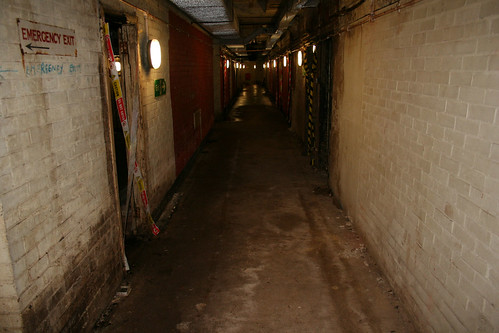

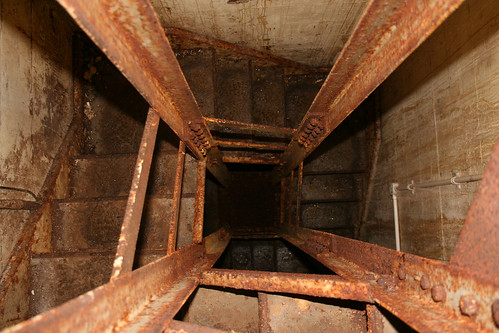
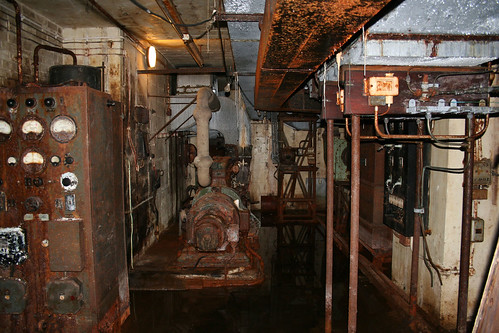
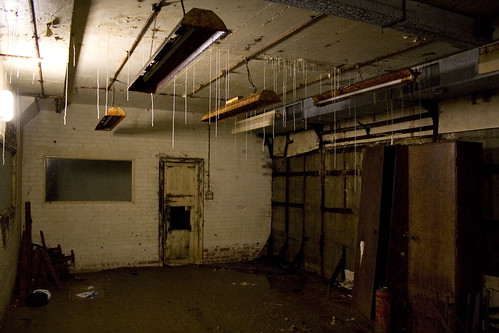
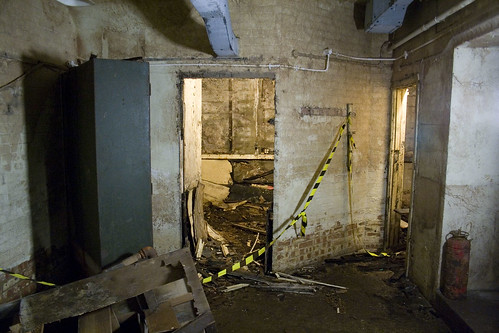







Are the “old gasometer” bunkers still there, or were they completely removed when the new ministry offices were built in Marsham Street?
Picture of the ‘Demonstration room’ in the 1930s
http://www.20thcenturylondon.org.uk/brnt-2734
“I wonder if the kettle brewing cups of tea was considered an essential service?”
Given that the Army fits a kettle to its tanks, I’m going to guess critical.
It’s a miracle paddock bunker was never really needed may it stay as a lasting reminder to the evils of war
HI IAN,
this place looks AMAZING!!!
Do you know how we would go about renting it out for a music video?
Do you have a contact there by any chance?
Any help would be so so amazing
Rosie x
Hey Rosie,
I might be able to put you in contact with someone who can help
Please email me
Mrdemitris@googlemail.com
Hi, does anyone know when the bunker will be open next, and how you arrange to join a tour? Thanks
I still cannot see any answers regarding visits to the Dollis Hill tunnel.is the lack of information due to the poor condition of the Tunnel and perhaps the need to take Wellington boots on any excursion?